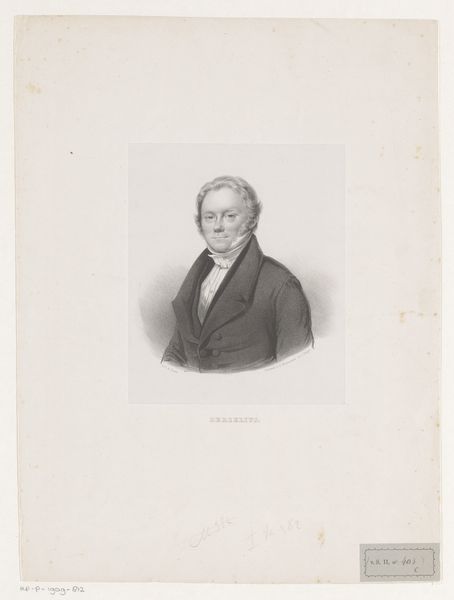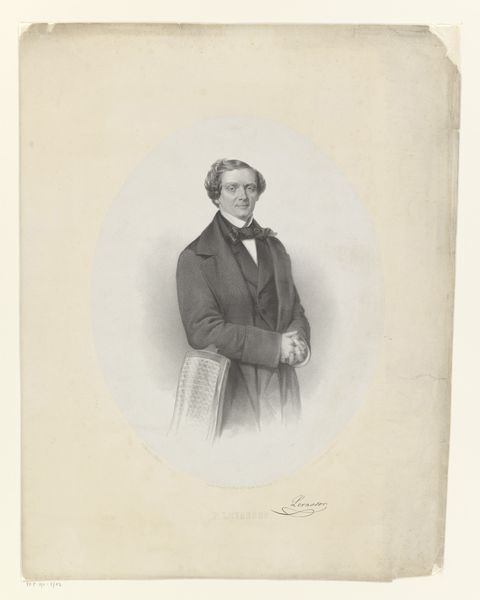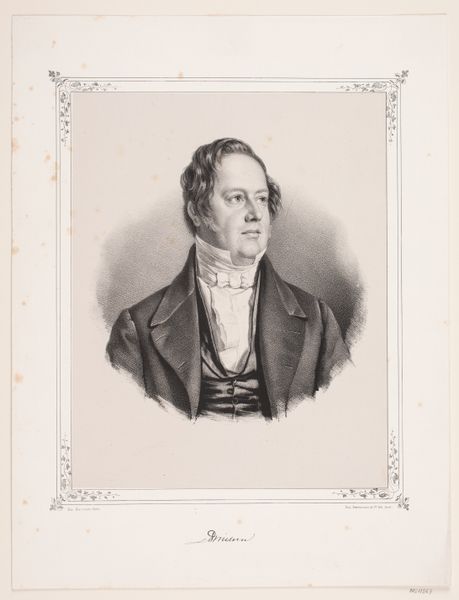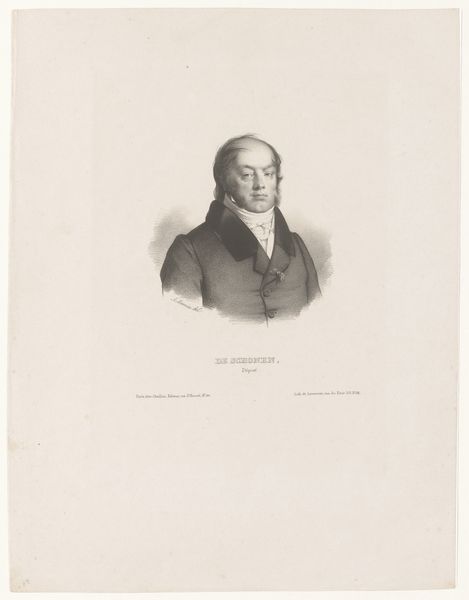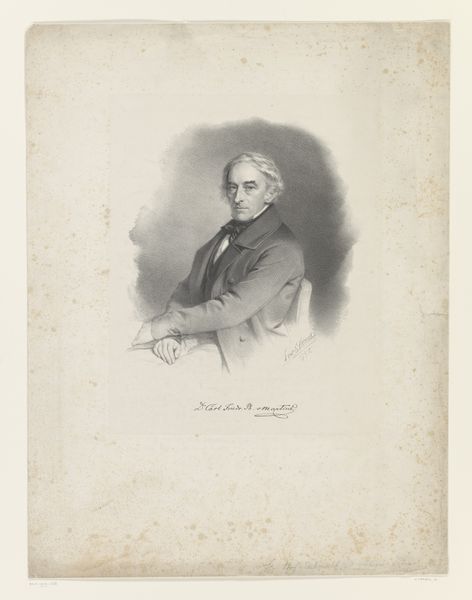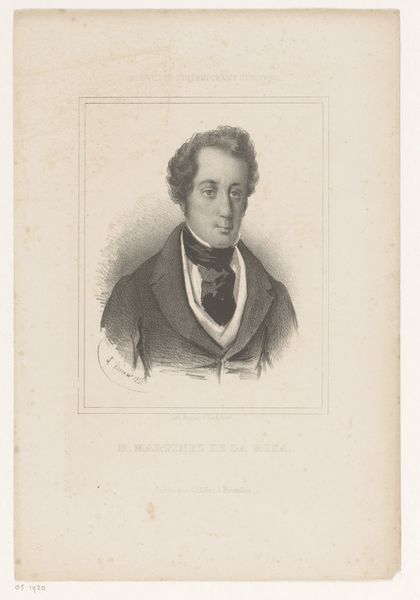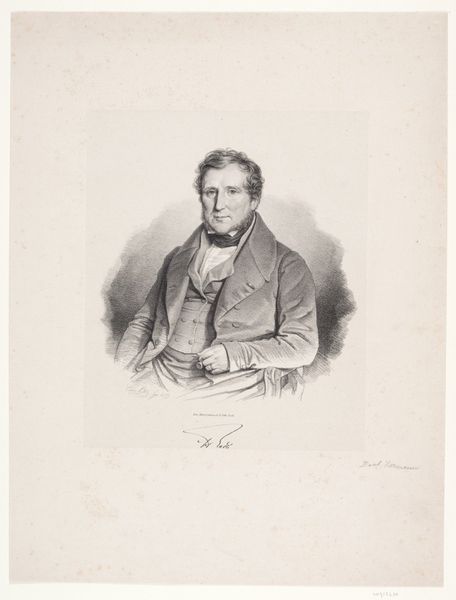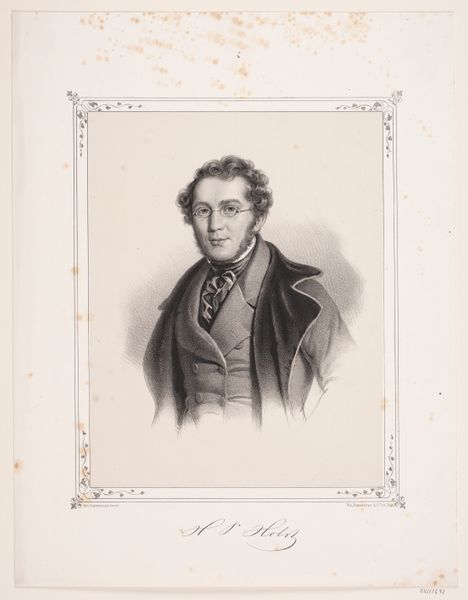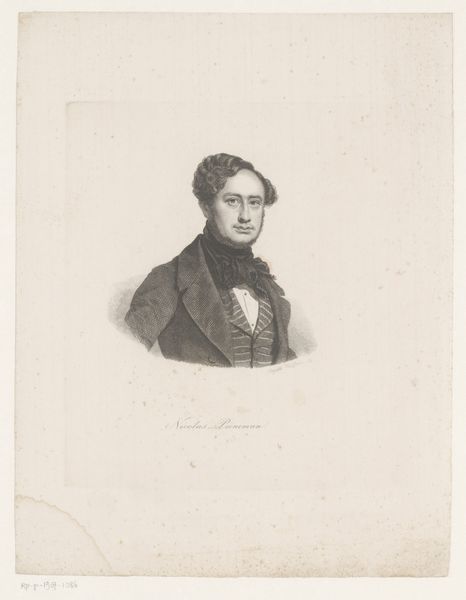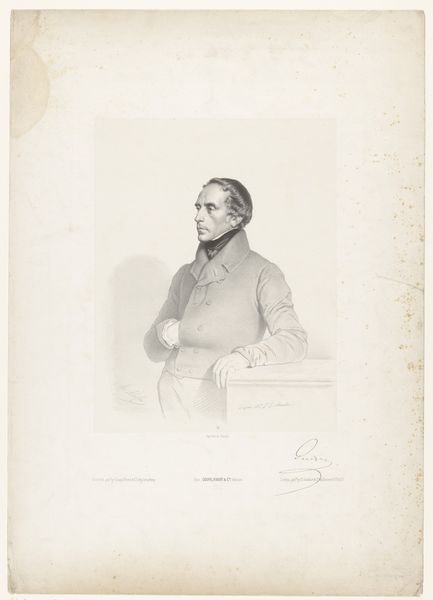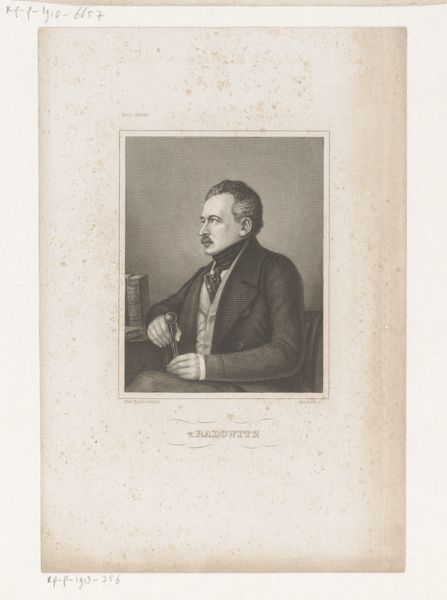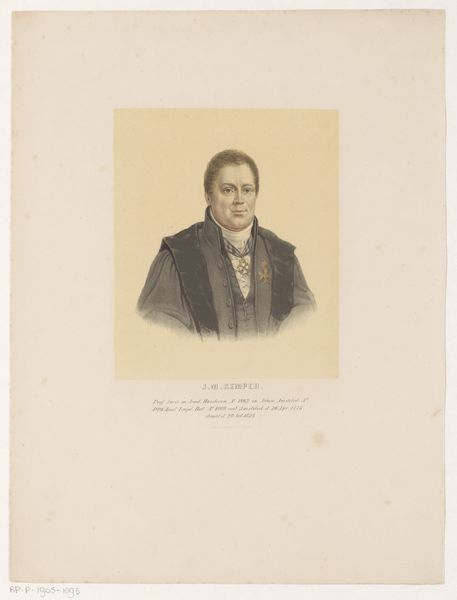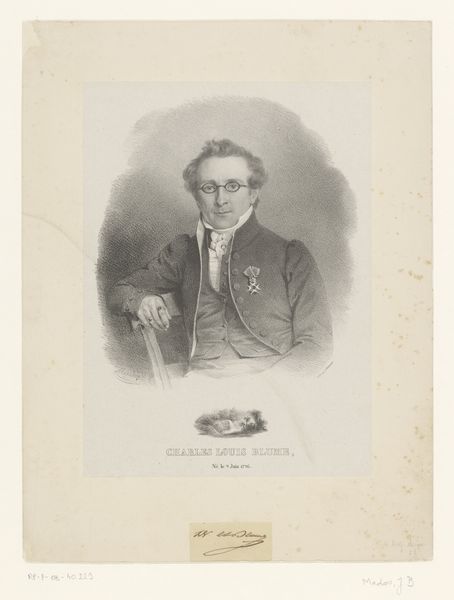
lithograph, print
#
portrait
#
lithograph
# print
#
19th century
#
academic-art
#
realism
Dimensions: 339 mm (height) x 264 mm (width) (bladmaal)
Emil Bærentzen created this portrait of Christian Winther using lithography, a printmaking technique that democratized image production in the 19th century. Lithography relies on the fact that oil and water don't mix. The artist draws an image on a flat stone or metal plate with a greasy crayon, then applies ink, which sticks only to the greasy areas. The print is then made by pressing paper against the prepared surface. Lithography allowed for relatively quick and inexpensive reproduction, making images more accessible to a wider audience. The fine lines and subtle gradations of tone achieved in this print demonstrate the skill involved in mastering this process. Consider the labor involved, both in quarrying and preparing the lithographic stone, and in the artist's handiwork. By understanding the materials and making of this artwork, we can appreciate its historical and social context, and challenge traditional hierarchies that separate art from craft and industrial production.
Comments
No comments
Be the first to comment and join the conversation on the ultimate creative platform.
